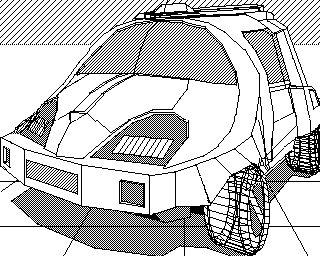- Details
- Geschrieben von Super User
- Hauptkategorie: Magazines
- Kategorie: CFOG's PIP
- Veröffentlicht: 30. November 1987
- Zugriffe: 25215
CFOG's PIP, April 1990, Volume 9 No. 2, Whole No. 74, page 14
VDE Praised
[From PC Magazine's columnist, John Dvorak, what you already knew about Eric Meyer's VDE. We found this text on the Glendale Littera board, one of the release points for the DOS VDE. The command "VDE" on Glendale automatically sends the latest version of VDE to you. Glendale Littera is at 818-965-6164. -- bhc]
GENUINELY INTERESTING SOFTWARE DEPT.: This may be the finest piece of word processing code every written. I have never been as impressed with anything as I have with VDE 1.5. It was coded by the talented Eric Meyer in Norman, Oklahoma. More than a WordStar clone, this is a full-blown word processor utilizing WordStar commands with windowing, undo... programmable function keys, auto-save, macro capability, 43/50-line toggle, WordPerfect compatibility, WordStar 3, 4, and 5 compatibility, blazing speed, and more.
Fully loaded, the code size is just over 40K -- proof that writing software in 100 percent assembly language still pays off in performance and reduced code size. It's an astonishing product, believe me. It's more than the perfect laptop word processor. Actually, it's something that corporations should consider if they want to save tens of thousands of dollars.
Now that the Software Publishing Association is dogging large corporations and trying to get employees to fink on their bosses if a bootleg copy of some software is present, it's time everyone went legit. VDE is free to individuals and sold in the form of site licenses for corporations. Twenty desktops for $50. For larger sites it's even cheaper per desktop... Smart corporate micro managers should consider the possibilities.
One company bonus: individual users can use the software free of charge. This means employees can take the system home without worrying about corporate piracy concerns.
The use of quality alternative software by large institutions is not new. The Los Angeles Times uses PC-Write exclusively. It's on all the reporters' desktop machines and remote laptop computers...
I cannot give a higher recommendation for any product that I have seen in ten years than I can for VDE 1.5. Top recommendation.
[Dvorak is late in learning about Eric Meyer's wonderful word processor, but CFOGgers have been reading about it here since July 1986, and about the MS-DOS version since December 1987. If you haven't believed me, believe John Dvorak. -- bhc]
CFOG's PIP, April 1990, Volume 9 No. 2, Whole No. 74, page 14
The Raisin Bran Problem
I was contemplating the bowl of raisin bran. It was from the bottom of the box. Unlike a bowl from the top of the box which is all flakes and hardly any raisins, there was an abundance of raisins but the bran flakes were mostly crumbs. Why couldn't the raisins be even throughout? Why did they and the crumbs sift to the bottom of the box? Why couldn't something be done about it? I pondered these and other mysteries of the universe as I chewed my way through the raisins. I downed the last of the cold coffee -- it would have been warm still if the bowl had been from the top of the box -- and ambled off to my laboratory, disgruntled.
There must be a way, I thought. I opened the door and turned on the light. A small grey-haired man with a full beard stood hunched over the bench, carefully piecing together a small cardboard box. He turned, acknowledged my presence, and smiled. "This is my new gravity-dispersing box", he chuckled. "It will solve the raisin bran problem. You simply pour the raisin bran into this box," he continued, opening a fresh box of raisin bran on the lab counter, "and the contents are evenly dispersed through its entire volume. As you pour out the contents you'll get a proportionate share of whole flakes, raisins, and crumbs with each serving."
I ran to the kitchen and got a dozen cereal bowls. I ran back to the lab, opened the gravity-dispersing box, and poured raisin bran into each one. I carefully separated out the raisins with tongs and divided the flakes from the crumbs. I weighted the contents of each bowl, raisins, flakes, and crumbs -- separately -- and entered the results in a spreadsheet. A few slash commands and I had a pretty picture on the screen: the proportion of raisins to whole flakes to crumbs didn't vary one percentage point from bowl to bowl. A triumph of modern technology!
I turned to small man: "This is fantastic!" I said. "Could we put the same properties into a bottle?" I wanted to apply the gravity dispersant technique to Italian salad dressing. "Alas, no," he said. "The gravity-dispersant requires a pourous host material."
"Let me dictate the formula to you," he continued. I turned to my computer keyboard and opened a file. "Ready", I said. He started to speak, but the words grew faint. I turned to ask him to speak up, but he wasn't there. Damn! Now all I've got is this one lousy box! Kellogg's would have made me rich!




